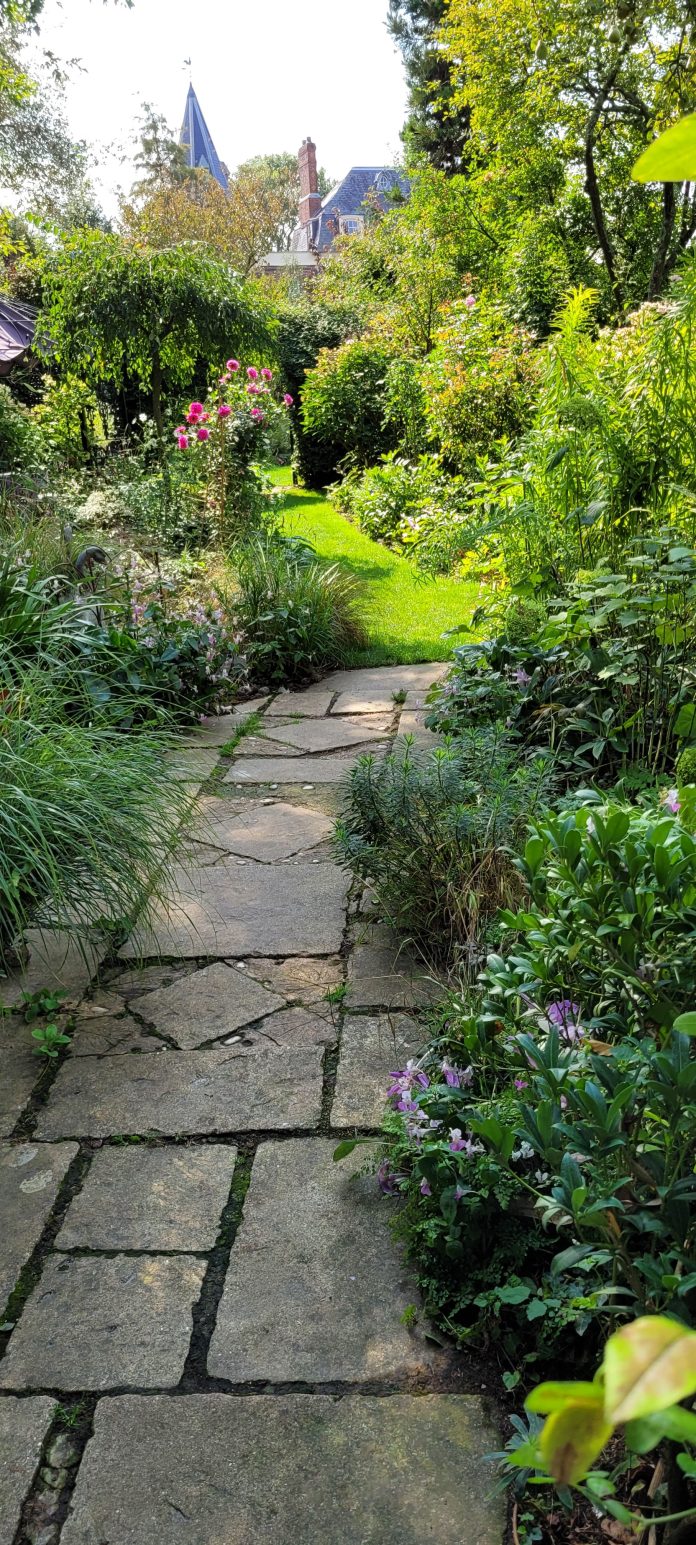
by Bernadette Vangool
Saskatchewan Perennial Society
Normandy, a region of France with historic significance to Canadians, is often visited to see the sites that commemorate our part in the two World Wars. However, this landscape is also home to many memorable gardens. The majority of these are privately owned and maintained, and depend on the tourist industry to keep them afloat and in some cases to carry out restorations. Many are connected to grand estates, where the historic buildings can also be visited. One can travel on your own to these destinations, or else search the internet for formal garden tours to a particular region of interest.
Our foray into Normandy, took us to the picturesque town of Rouen, steeped in Normandy history and famed as the place where Joan of Arc was burned at the stake in 1431. We enjoyed a walking tour through the town of half-timbered buildings, a visit to the cathedral and of course the Joan of Arc Museum. One of our first garden stops was Les Jardins’ d’Angelique. This garden forms part of an 18th century estate and was created by Yves and Gloria le Bellegarde in memory of their daughter. Self-taught gardeners, Yves brought a love for roses and Gloria an artist viewpoint into the garden. She realized early on, the importance of using different perennials, with different bloom times throughout the garden, to ensure some colour throughout the seasons. To the north of the mansion, is the informal English garden, with meandering pathways and occasional benches where you can rest and enjoy your surroundings. The south garden is in the formal French/Italian style, with a symmetrical design of trimmed hedges around the central fountain focal point. Plantings of annuals and perennials within those hedges contain predominantly white blooms. Since Yves passing, Gloria maintains the gardens with the help of her daughter Claire.
For the student of French literature, a visit to Chateau de Miromesnil near Dieppe, would be of interest. The beautiful setting, with ample perennial borders, and perhaps the best kitchen garden on our entire trip, also allows a visit to the Chateau, the birthplace of Guy de Maupassant, the French master of the short story. Some of his letters and original manuscripts are on display. Besides a day visit to the castle, you also have the option of an overnight stay there or in one of the estate cottages.
Chateau de Canon, located about 20 km from Caen, is a twenty-hectare English landscape park with beautiful buildings constructed around 1760. At that time an ornamental spring-fed lake was also constructed to perfectly reflect the castle. The estate has survived revolutions and two World Wars, but has belonged to the same family throughout. During the second world war it served as a German hospital, the foliage of two century-old trees providing screening from the allies. Since the last war. some parts of the estate have been restored under a system of war compensation. However, the bulk of the renovations have fallen to the de Beaumont family. In 1999 they formed a civic property association in which all family members are represented and each pledges 150 hours per year of work to the estate in various roles: gardening, publicity, reception etc. The English landscape park is complete with follies, (a dove cote, a Greek Temple, a mini chateau), waterfalls, and decorative bridges across canals. The water falls and canals create a restful atmosphere. The estate is also recognized for its ten walled gardens called chartreuses, which originally were planted with fruit trees, espaliered against the walls. The walls, heated by the sun, create a microclimate allowing for the growing of peaches figs and other fruits not endemic to the area. Some of the walled gardens are now planted with peonies, roses, and other perennials, but are in the process of being fully restored to their original uses.
Some of the other sites worth visiting in Normandy include: Chateau de Boutemont, Chateau de Meznil Geoffrey, Jardins d’Etretat, Jardin du Bois de Morville and Les Jardins de Castillon-Plantbessin. During your visit, don’t forget to sample the Camembert, a local cheese made from raw milk, the apple ciders and the famous Calvados, an apple brandy this region is famous for.
This column is provided courtesy of the Saskatchewan Perennial Society (SPS; saskperennial@hotmail.com ). Check our website (www.saskperennial.ca) or Facebook page (www.facebook.com/saskperennial) for a list of upcoming gardening events.

